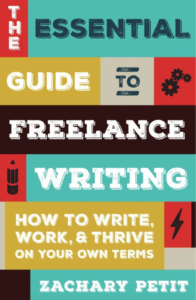So, What Exactly Is “Steampunk”?
You may already know all about this exciting subgenre, but maybe you’ve just heard the term in passing and you’re still not 100% sure what the heck it means, or…
You may already know all about this exciting subgenre, but maybe you’ve just heard the term in passing and you're still not 100% sure what the heck it means, or maybe this style of fiction hasn’t even shown up on your radar yet. It likely has, but you may not realize it.
Best-selling author Jay Lake discusses the subgenre in a new release from Writer’s Digest Books, Writing Fantasy & Science Fiction: How to Create Out-of-This World Novels and Stories, and he explains that you can find the roots of steampunk in the works of H.G. Wells and Jules Verne. These authors, and many more, wrote about the fantastic machines mankind would inevitably create in the distant future, or were able to create in their own era in marveling ways. Today’s steampunk stories live in that adventurous spirit, but instead of looking ahead, steampunk authors tend to look back and create an alternative history based on Victorian-era (or even earlier) modes, fashions, and technologies, but with science-future twists: Great airships float through 19th century London skies; steam-powered, rusted robots trudge across the American West; and jet-packs and outlandish weapons full of gears and copper wiring are as common as coal stacks and monocles.
Using these wonderfully skewed “old-fashioned” objects with futuristic technologies in order to create stories full of leather-clad aviators, explorers, and heroines is the crux of the subgenre, and the style lends itself to all kinds of fun experiments. For a more detailed look, here is an excerpt from Jay Lake’s portion of Writing Fantasy & Science Fiction:
STEAMPUNK PLOTS
Because steampunk can be interpreted as a skin or a style rather than a deep genre of its own, a wide range of plot structures and devices are available to you, the writer. This is how steampunk can embrace the diversity discussed earlier while still holding on to its clanking heart. Hence the emergence of steampunk romances such as Meljean Brook’s The Iron Duke (2010), steampunk Westerns such as Felix Gilman’s The Rise of Ransom City (2012), and steampunk mysteries such as The Affinity Bridge by George Mann (2008).
Much of steampunk literature falls into the category of a hero’s journey. That can take the form of an adventure quest, the struggle of a benighted or outcast individual to find their way back into or around society. But a steampunk plot also can focus on outsider conflict, for which the Victorian class structure and political environment offers very fertile ground. Even where steampunk concerns itself with the powerful, you will find conspiracy plots akin to thrillers, wheels within wheels driving action and shaping changes for the protagonists and secondary characters alike.
Likewise, the old classics work well, such as divergence between two main characters’ goals. This is usually the case in steampunk romances.
Steampunk plots do not tend toward validation of social norms with a focus on restoration of order. This reflects the subgenre’s roots in science fiction, where disruptive or nonnormative plots and story outcomes are stereotypical. When steampunk moves into romance, detective, or fantasy fiction, those genres’ drive toward the restoration of order as a character motivator is automatically in conflict with steampunk’s disruptive, outsider nature. Within those genres, a character’s inability to restore the desired order drives them to dramatic change. For example, Tarnished by Karina Cooper (2012), part of the St. Croix Chronicles, features a main character who is an opium addict and an heiress, and acts as a detective of sorts in Victorian England because her allowance doesn’t cover her addiction. Steampunk romances, detective stories, and fantasies follow science fiction into disruptive plot arcs, which often bring about profound changes not only in the characters but in the world surrounding them.
You can find pointers to this kind of plotting not only in the works of fiction in the steampunk canon, but also in nonfiction covering the era. Mike Jay’s The Air Loom Gang (2004), for example, is as strange a story of murder, mind control, and disruptive technology as you’ll find. Yet is it also a true-to-life tale from the late eighteenth century, when the Industrial Revolution was just stirring and Queen Victoria was not even conceived.
The main thing to keep in mind when plotting a steampunk story is that a sense of fun, often bordering on sheer, wall-eyed weirdness, is one of your best keys to the subgenre. Steampunk was born to be an over-the-top form. The characters might be wry, understated persons of mordant wit and significant accomplishment, but if you give them a story which carries the reader along in a flood of action analogous to the classic cyberpunk “eyeball kick”, you will fulfill the promise of steampunk.
Have fun with your story or novel, and make the reader have fun with the characters to be found within it.
Are you a fan of steampunk? Let us know about your favorite steampunk novels, graphic novels, stories, movies, or characters in the comments below. And if you’re just getting interested in the subgenre, be sure to read the rest of Jay Lake’s chapter on steampunk in Writing Fantasy & Science Fiction!









